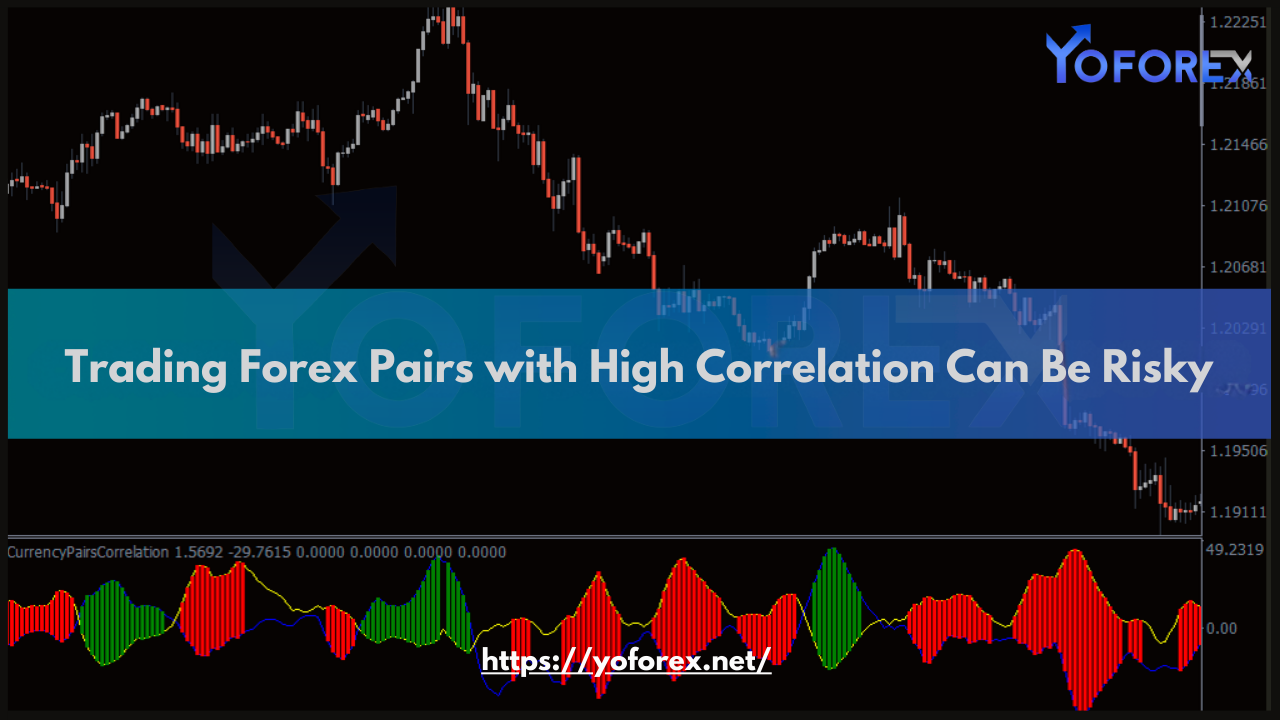Forex trading involves analyzing and managing risks, and one of the significant aspects to consider is currency pair correlation. Correlation refers to the relationship between the movements of two currency pairs. While understanding correlations can provide valuable insights into market dynamics, trading forex pairs with high correlations can be risky if not managed carefully.
This blog explores the concept of forex pair correlation, its risks, and strategies to mitigate potential pitfalls when trading highly correlated pairs.
What is Currency Pair Correlation?
Currency pair correlation measures the degree to which two currency pairs move about each other. It is quantified using a correlation coefficient, ranging from -1 to +1:
- +1 (Perfect Positive Correlation):
- The pairs move in the same direction 100% of the time.
- Example: EUR/USD and GBP/USD.
- 0 (No Correlation):
- The pairs move independently of each other.
- -1 (Perfect Negative Correlation):
- The pairs move in opposite directions 100% of the time.
- Example: EUR/USD and USD/CHF.

Why Correlation Matters in Forex Trading
Understanding currency pair correlation is crucial for several reasons:
- Portfolio Diversification:
- Trading pairs with high positive correlation may lead to overexposure, while pairs with negative correlation can help balance risks.
- Risk Management:
- Correlation helps identify potential risks from simultaneous trades in highly correlated pairs.
- Market Insights:
- It provides insights into global economic relationships and market trends.
Risks of Trading Highly Correlated Forex Pairs
Trading forex pairs with high correlation involves several risks that traders need to consider:
1. Overexposure to Market Movements
- Issue:
- Entering multiple trades in positively correlated pairs can amplify exposure to a single market movement.
- Example:
- If you go long on EUR/USD and GBP/USD, both pairs may rise or fall together, doubling your risk.
2. Reduced Portfolio Diversification
- Issue:
- High correlation undermines diversification, making your portfolio more vulnerable to adverse movements.
- Example:
- Simultaneous trades in USD/JPY and EUR/USD may result in similar outcomes, reducing the protective benefits of diversification.
3. Compounding Losses
- Issue:
- Losses in one trade can magnify losses in another if both pairs are highly correlated.
- Example:
- A strong USD rally against multiple currencies could lead to significant losses across correlated trades.
4. False Sense of Security in Negative Correlation
- Issue:
- Negative correlation is not constant and can shift due to economic changes or market sentiment.
- Example:
- EUR/USD and USD/CHF may not always move inversely during times of extreme volatility.
Examples of Highly Correlated Currency Pairs
- Positively Correlated Pairs:
- EUR/USD and GBP/USD: Both are influenced by the strength of the US Dollar.
- AUD/USD and NZD/USD: Both are driven by commodity prices and economic ties.
- Negatively Correlated Pairs:
- EUR/USD and USD/CHF: These pairs often move inversely due to the USD’s strength against the Euro and Swiss francs.
- GBP/USD and USD/JPY: When the USD strengthens, GBP/USD may fall while USD/JPY rises.
How to Mitigate Risks When Trading Correlated Pairs
To manage the risks associated with trading highly correlated forex pairs, traders can adopt the following strategies:
1. Monitor Correlation Coefficients
- Use correlation tables or tools to track the correlation coefficients of currency pairs.
- Regularly update your analysis as correlations can change over time.
2. Limit Exposure
- Avoid opening multiple positions in highly correlated pairs simultaneously.
- Diversify your portfolio by including uncorrelated or negatively correlated pairs.
3. Hedge Your Trades
- Use negatively correlated pairs to hedge against potential losses.
- Example: If you are long on EUR/USD, consider a short position in USD/CHF.
4. Adjust Position Sizing
- Reduce your position size when trading highly correlated pairs to minimize potential losses.
5. Focus on Fundamental and Technical Analysis
- Combine correlation insights with technical indicators and fundamental analysis to improve decision-making.
- Example: Use support and resistance levels or economic data releases to confirm trade setups.
6. Avoid Overleveraging
- High leverage can amplify the risks of trading correlated pairs. Use conservative leverage ratios.
Practical Example: Trading Correlated Pairs
Scenario:
- You identify a strong positive correlation between EUR/USD and GBP/USD.
Trade Setup:
- Analysis:
- Both pairs are trending upward due to USD weakness.
- EUR/USD shows a breakout above resistance.
- Action:
- Instead of opening long positions in both pairs, you choose EUR/USD to reduce exposure.
- Outcome:
- By limiting your trade to one pair, you minimize the risk of compounding losses if the USD strengthens unexpectedly.
Tools for Managing Correlation Risks
- Correlation Matrix:
- Tools like Myfxbook and TradingView offer correlation matrices to track pair correlations.
- Economic Calendars:
- Monitor news events that may affect correlated pairs simultaneously.
- Risk Management Software:
- Platforms like MetaTrader 4/5 allow you to set custom alerts for correlated pair movements.
Benefits of Understanding Correlation
- Improved Trade Planning:
- Helps traders identify complementary or conflicting trades.
- Enhanced Risk Management:
- Reduces the likelihood of overexposure and portfolio imbalances.
- Insight into Market Relationships:
- Provides a deeper understanding of how global economic factors influence currency pairs.
Conclusion
Trading forex pairs with high correlation can be risky if not managed effectively. While correlations offer valuable insights into market relationships, they also introduce potential pitfalls like overexposure and compounding losses. By understanding correlation dynamics and adopting robust risk management strategies, traders can navigate these challenges and optimize their trading performance. Whether through diversification, position sizing, or hedging, disciplined approaches are essential for minimizing risks and achieving success in the forex market.

